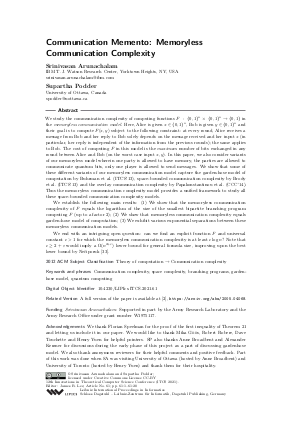LIPIcs.ITCS.2021.61.pdf
- Filesize: 0.55 MB
- 20 pages

 Creative Commons Attribution 3.0 Unported license
Creative Commons Attribution 3.0 Unported license











































Feedback for Dagstuhl Publishing